How to Plant Sugar Cane: Thriving Yields Made Simple
- March 19, 2024
- 0 comment
Learn how to plant sugar cane, a versatile tropical grass valued for sugar production, biofuels, and ornamental use. This guide covers everything from choosing the right variety to successful harvesting, perfect for commercial and home growers. The plant is cultivated for its ability to produce sugar, as well as for biofuel production, and even as an ornamental plant in some gardens. This article will guide you through the process of planting sugar cane, from selecting the right variety to harvesting your crop.
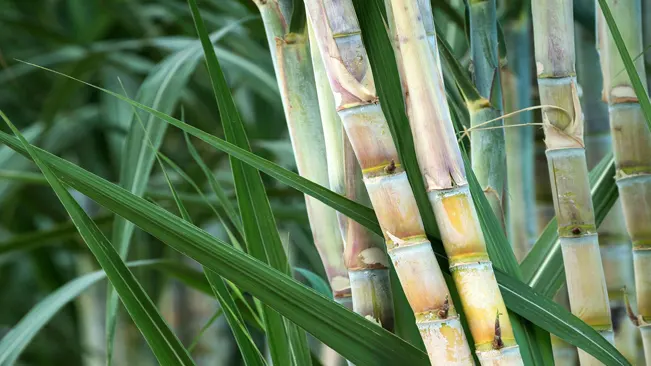
Benefits of Sugar Cane
| Benefit | Description |
|---|---|
| Natural Sweetener | Sugar cane is a rich source of sucrose, which is extracted and processed to produce natural sugar. This provides a healthier alternative to refined sugars when used in moderation. |
| Energy Boost | The sucrose in sugar cane is easily absorbed by the body, providing a quick source of energy and hydration, making it especially beneficial during hot weather or physical activity. |
| Digestive Health | Sugar cane juice has alkaline properties and contains dietary fiber, which can aid in digestion and help prevent digestive disorders. |
| Hydration | Being rich in water content, sugar cane juice is an excellent hydration option, helping to replenish lost fluids and electrolytes. |
| Nutritional Value | Sugar cane contains essential nutrients like vitamin C, magnesium, potassium, iron, and calcium, contributing to overall health and well-being. |
| Antioxidant Properties | It contains flavonoids and phenolic compounds, which have antioxidant properties that can help in fighting off free radicals and reducing oxidative stress. |
| Dental Health | Sugar cane juice has minerals that can help build tooth enamel and strengthen teeth, potentially preventing tooth decay when consumed in moderation. |
| Skin Health | Due to its hydrating and antioxidant properties, sugar cane can have beneficial effects on skin health, potentially improving skin texture and preventing aging. |
| Anti-inflammatory Effects | The compounds in sugar cane have anti-inflammatory properties, which can help in managing inflammation and pain in conditions like arthritis. |
| Boosts Immunity | The vitamin C and antioxidants present in sugar cane juice help strengthen the immune system and fight off infections. |
List on How To Plant Sugar Cane
- Select the Right Variety
- Choose the Planting Site
- Prepare the Planting Material
- Plant the Setts
- Watering and Mulching
- Fertilization
- Harvesting
- Pest and Disease Management
Select the Right Variety
First, choose a sugar cane variety that is best suited to your climate and soil type. There are many varieties available, each with its unique characteristics and sugar content. Consult local agricultural extension services or nurseries for advice on the best varieties for your area.
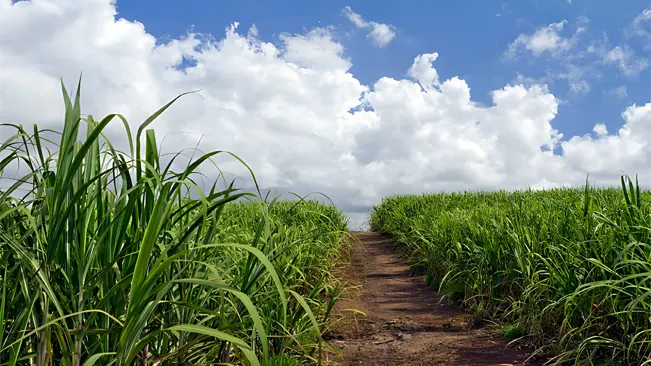
Climate Adaptation
- Sugar cane varieties differ in their tolerance to temperature, humidity, rainfall, and drought conditions. Some varieties are more suited to tropical climates with high humidity and rainfall, while others can tolerate drier, subtropical environments. Understanding your local climate is essential in choosing a variety that can thrive in your area.
Local Performance and Availability
- It’s beneficial to look at the performance of different sugar cane varieties in your region. Local agricultural extension services, universities, and experienced growers can provide valuable insights into which varieties perform well locally. Availability of planting material is also a consideration; ensure that you can source the variety you choose.
Consulting Experts
- Given the complexity and regional specificity of sugar cane cultivation, consulting with local agricultural extension services, nurseries, and experienced sugar cane growers can provide invaluable insights. These experts can offer advice based on local conditions, pest and disease pressures, and market demands.
Choose the Planting Site
Sugar cane prefers a sunny location with well-draining soil. It thrives in warm, tropical to subtropical climates but can also grow in temperate zones during the warm months. The ideal soil is a fertile, loamy soil with a pH between 5.5 and 6.5. If your soil is heavy clay or very sandy, consider amending it with organic matter to improve its structure and fertility.
Sunlight

- Sugar cane is a sun-loving plant that requires full sunlight for optimum growth. The plant uses sunlight to perform photosynthesis, the process by which it converts light energy into chemical energy, producing sugars that fuel its growth. A site that receives at least six hours of direct sunlight daily is ideal. Insufficient sunlight can lead to weak, spindly growth and reduced sugar content in the canes.
Soil Type
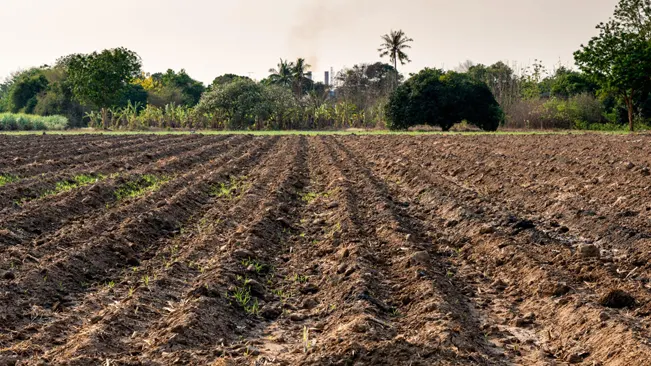
- The ideal soil for sugar cane is fertile, loamy soil. Loamy soils are well-draining yet retain enough moisture to sustain the plants. They are a mix of sand, silt, and clay, providing a balance of drainage and water-holding capacity. This soil type also allows for good root penetration, enabling the sugar cane to establish a strong root system for support and nutrient uptake.
Soil Drainage
- Well-draining soil is essential for sugar cane, as waterlogged conditions can lead to root rot and other diseases. The soil should allow excess water to drain away quickly while retaining enough moisture to keep the roots hydrated. If the natural drainage of the site is poor, consider implementing drainage solutions such as raised beds or drainage ditches.
Soil pH
- The pH level of the soil, a measure of its acidity or alkalinity, significantly affects the availability of nutrients to the sugar cane plants. Sugar cane prefers slightly acidic to neutral soil, with a pH range of 5.5 to 6.5. Outside this range, certain essential nutrients may become less available, affecting plant growth and development. You can test your soil’s pH using a soil test kit available at garden centers. If the pH is not within the desired range, it can be adjusted using lime (to increase pH) or sulfur (to decrease pH).
Prepare the Planting Material
Sugar cane is propagated from cuttings, known as “setts,” which are sections of mature cane stalks. Each sett should have at least two to three buds or nodes. Before planting, it’s a good idea to soak the setts in water for a day to hydrate them and to promote rooting.

Selection of Mature Cane Stalks
- Maturity: Choose mature cane stalks that are about a year old, as they have the highest potential for successful rooting and growth. Mature stalks are typically harder, more fibrous, and have a high sugar content.
- Health: Ensure the stalks are healthy, without signs of disease, pest infestation, or damage. Healthy stalks increase the likelihood of successful propagation.
Cutting of Setts
- Length: Each sett should be about 12 to 18 inches long, containing at least two to three buds or nodes. Nodes are the thickened parts of the stalk from which new growth emerges.
- Tools: Use a sharp, clean cutting tool to make the cuts. This reduces the risk of infection and ensures a clean cut that promotes better healing and rooting.
Hydration and Treatment
- Soaking: Soak the setts in water for at least 24 hours before planting. This hydration step is crucial for awakening the dormant buds and promoting initial root development. It also helps in cleaning the setts and removing any adherent soil or pathogens.
- Optional Treatments: Some growers treat the setts with fungicides or rooting hormones to further enhance rooting success and protect against soil-borne diseases. However, this step may vary based on local agricultural practices and organic farming standards.
Buds Orientation
- Bud Positioning: When planting, ensure that the buds are facing upwards or sideways. This orientation is vital because the buds will sprout and grow upwards, while the roots will develop downwards.
Plant the Setts
Plant the sugar cane setts in the ground during the warm season when the soil temperature is at least 50°F (10°C). Lay the setts horizontally in furrows about 4 inches deep, ensuring that the buds are facing upwards. Space the setts about 5 to 6 feet apart in rows, and cover them lightly with soil. Water the newly planted setts thoroughly.
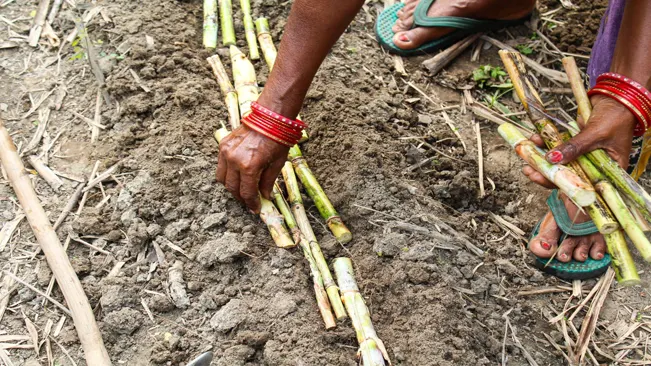
Timing and Climate Considerations
- Warm Season Planting: It’s crucial to plant sugar cane during the warm season because the crop thrives in warm temperatures. This timing ensures that the setts have the best chance of rooting and growing before the cooler weather arrives.
- Soil Temperature: The recommendation to wait until the soil temperature reaches at least 50°F (10°C) is based on the fact that sugar cane setts germinate and root best in warm soil. Cooler soil temperatures can slow down the germination process or increase the risk of rot.
Preparing the Setts
- Cutting and Selection: The setts should be cut from healthy, mature sugar cane stalks, ideally from the middle sections where the growth nodes (buds) are most viable. Each sett should have at least two to three buds to ensure a higher chance of sprouting.
- Pre-Treatment: Soaking the setts in water for 24 hours before planting can help to hydrate them, increasing the chances of successful germination. Some farmers also treat the setts with fungicides or rooting hormones to protect against diseases and encourage root development.
Planting Technique
- Furrow Planting: Creating furrows, which are shallow trenches, helps in organizing the plantation and ensures that the setts are planted at a uniform depth. This method also aids in efficient irrigation and drainage.
- Horizontal Laying: The setts are laid horizontally in the furrows, which maximizes the soil contact for each bud, improving the chances of sprouting. Ensuring that the buds face upwards is crucial because this orientation aligns with the natural growth direction, allowing the shoots to emerge from the soil more easily.
- Spacing: The spacing of 5 to 6 feet between rows is important for several reasons. It allows sufficient sunlight to reach each plant, reduces competition for nutrients, and facilitates farm operations such as weeding, fertilization, and harvesting. Within the row, setts can be placed closer together, as they will be thinned out once they start growing.
Watering and Mulching
Watering
Sugar cane has a high demand for water due to its large leaf area, which transpires water at a high rate, and its deep root system, which can access moisture from deeper soil layers. However, the key is to provide consistent moisture without over-saturating the soil, as sugar cane does not tolerate waterlogged conditions well.
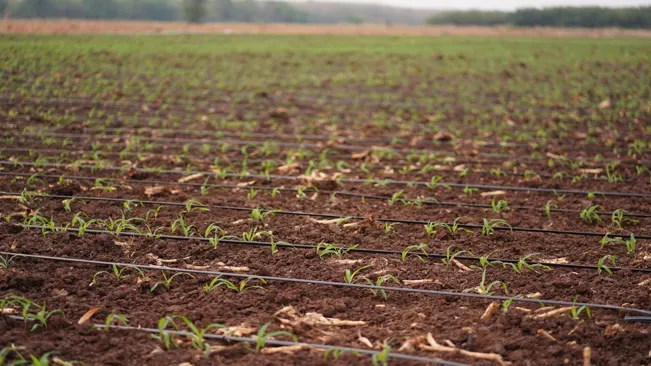
- Frequency and Amount: The frequency and amount of watering depend on the soil type, climate, and stage of growth. Young plants require more frequent watering to establish roots, whereas mature plants may need less frequent but deeper watering to reach the moisture available in lower soil layers.
- Irrigation Methods: Drip irrigation or furrow irrigation is often used in commercial cultivation to deliver water directly to the root zone, minimizing evaporation and ensuring efficient water use. For smaller gardens or plots, careful hand watering or sprinklers can be effective if managed properly to avoid excess moisture on leaves and stems, which can lead to fungal diseases.
- Climate Considerations: In regions with a dry season, irrigation is critical to maintain growth and prevent stress during critical growth phases, such as tillering and stalk elongation. In areas with ample rainfall, irrigation may be supplementary, primarily used during dry spells.
Mulching
Mulching involves covering the soil around plants with a layer of material, such as straw, bagasse (sugar cane residue), or commercial mulching films. This practice offers several benefits for sugar cane cultivation:
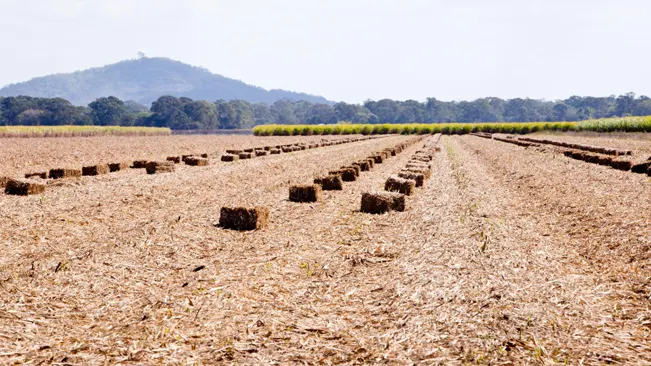
- Moisture Retention: Mulch helps to reduce evaporation from the soil surface, keeping the soil moist for longer periods. This is particularly beneficial during hot, dry conditions, reducing the need for frequent watering.
- Weed Suppression: A thick layer of mulch can inhibit the growth of weeds around the sugar cane plants. Weeds compete with sugar cane for nutrients, water, and light, so their suppression helps to ensure that the crops get the resources they need.
- Soil Temperature Regulation: Mulch acts as an insulating layer, protecting the soil from extreme temperature fluctuations. It can keep the soil cooler in hot weather and warmer during cooler nights, providing a more stable growing environment for the sugar cane.
- Soil Health Improvement: Organic mulches, like straw or bagasse, gradually decompose, adding organic matter to the soil. This improves soil structure, increases nutrient content, and promotes the activity of beneficial microorganisms in the soil.
- Erosion Control: Mulch can help prevent soil erosion by wind and water, particularly in areas with sloped terrain or heavy rainfall.
Fertilization
Fertilizers are compounds that supply essential nutrients to plants. The numbers in a fertilizer formula, such as 10-10-10, represent the percentage by weight of the three major nutrients required for healthy plant growth: nitrogen (N), phosphorus (P), and potassium (K), in that order. This type of fertilizer is considered balanced because it contains equal parts of these essential nutrients.
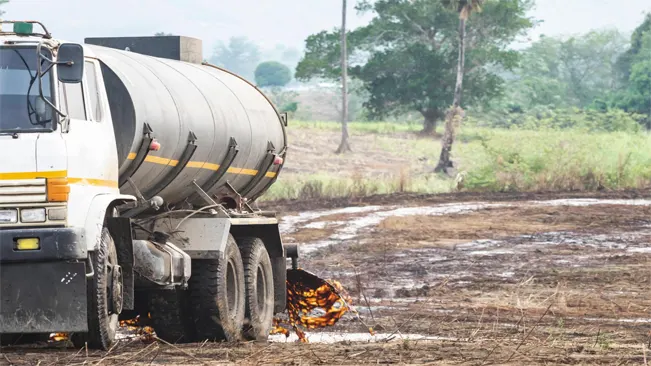
Application of a Balanced Fertilizer
- Initial Application: A few weeks after planting sugar cane, applying a balanced fertilizer like a 10-10-10 formula helps ensure that the young plants have access to equal amounts of nitrogen, phosphorus, and potassium. This balanced nutritional support promotes a strong foundation for root development, shoot growth, and overall plant vigor.
- Phosphorus (P) is crucial in the early stages for root development and helps in the energy transfer within the plant, aiding in the maturation process.
- Potassium (K) enhances the plant’s overall health, improves drought resistance, and is involved in the synthesis of plant sugars and starches.
Role of Nitrogen as Plants Mature
- Nitrogen for Growth: As sugar cane plants mature, they require additional nitrogen. Nitrogen is a key component of chlorophyll, the compound that gives plants their green color and plays a vital role in photosynthesis. By applying additional nitrogen, you encourage lush, green growth, which is crucial for maximizing the plant’s ability to produce sugars.
- Application Timing: The timing and rate of nitrogen application can vary based on soil type, weather conditions, and the specific variety of sugar cane. It’s often applied in split doses, with the first application shortly after the initial balanced fertilizer and subsequent applications timed to coincide with key stages of plant growth, such as tillering or when the cane begins to mature.
- Considerations: It’s important to monitor the plant’s response to nitrogen and adjust your fertilization strategy accordingly. Excessive nitrogen can lead to lush foliage at the expense of sugar accumulation in the cane stalks, while too little can stunt plant growth and reduce yields.
Best Practices
- Soil Testing: Conduct soil tests to determine the existing nutrient levels and adjust your fertilization plan accordingly. This ensures that you’re meeting the specific needs of your sugar cane crop without over-fertilizing, which can lead to nutrient runoff and environmental issues.
- Sustainable Fertilization: Consider incorporating organic matter and compost into your fertilization plan. These can improve soil health and structure, provide a slow-release source of nutrients, and reduce the need for chemical fertilizers.
Harvesting
Harvesting sugar cane is a crucial step in the cultivation process, as it determines the yield and quality of both the sugar and the subsequent crops. The harvesting process involves several key considerations and techniques:
Timing of Harvest
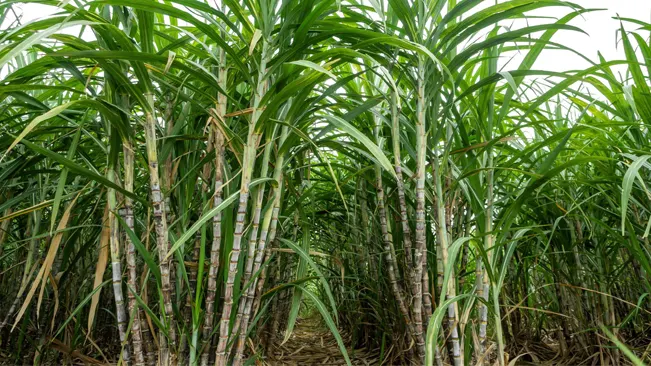
- Maturity: Sugar cane reaches maturity when the canes are full and have the highest sugar concentration. This usually occurs 12 to 18 months after planting but can vary based on environmental conditions and cane variety.
- Climate Impact: In tropical regions, sugar cane can be harvested year-round, while in more temperate zones, harvesting is done before the frost sets in to avoid damage to the canes.
- Indicator Signs: Farmers often look for physical signs in the canes, such as changes in color and the drying of leaves, to determine the optimal harvest time.
Harvesting Methods
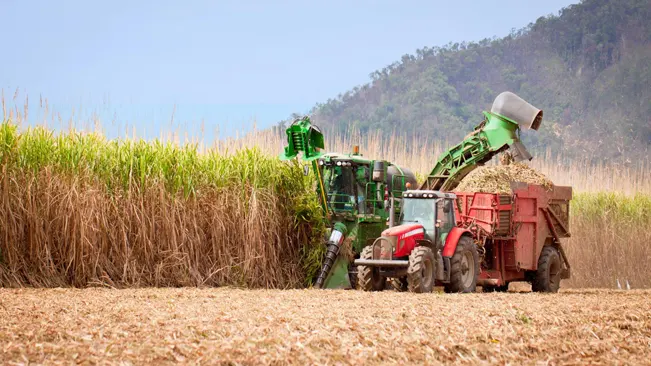
- Manual Harvesting: In many parts of the world, sugar cane is still harvested manually using machetes. This method allows for selective harvesting but is labor-intensive and time-consuming.
- Mechanical Harvesting: In larger commercial farms, especially in countries with advanced agricultural practices, mechanical harvesters are used. These machines can cut the canes close to the ground and strip the leaves in a single operation.
Post-Harvest Processing
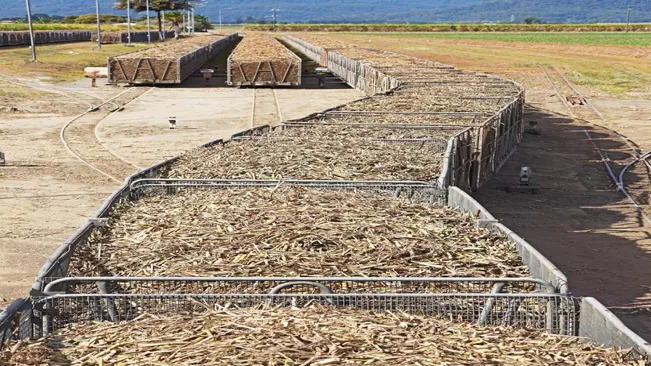
- Transport: Once harvested, the canes are quickly transported to processing facilities to extract the sugar. The faster the canes are processed after harvesting, the better the quality of sugar produced, as the sugar content starts to decrease once the cane is cut.
- Sugar Extraction: At the mill, the sugar cane is crushed to extract the juice, which is then purified, evaporated, and crystallized to produce sugar.
Ratoon Cropping

- Regrowth: After the initial harvest, the sugar cane roots, left in the ground, will sprout new shoots. This regrowth is known as “ratoon” or “ratoon crop.”
- Ratoon Management: Ratoon crops require careful management, including fertilization, weed control, and pest management, to ensure good productivity. Ratoon crops generally mature faster than the plant crop but may yield less.
Pest and Disease Management
Be vigilant for signs of pests and diseases. Common sugar cane pests include borers, aphids, and mites. Diseases such as smut, rust, and leaf scald can also affect sugar cane. Consult with local agricultural experts for appropriate control measures tailored to your area.
Pests
- Borers: These are larvae of different species of moths that bore into the cane stalk, causing internal damage and reducing yield. Management includes regular monitoring, using resistant varieties, and biological control agents like parasites and predators of the borers.
- Aphids: These small, sap-sucking insects can transmit diseases and cause sooty mold growth due to the honeydew they excrete. Control measures include the use of natural predators like ladybugs, and, if necessary, the application of insecticidal soaps or oils.
- Mites: Spider mites can cause damage by piercing plant cells and sucking out their contents, leading to reduced vigor and potentially death in severe infestations. Mitigating mite problems can involve introducing natural predators, maintaining proper irrigation, and applying miticides when infestations are severe.
Diseases
- Smut: Caused by the fungus Sporisorium scitamineum, smut is recognizable by the black, whip-like structures that emerge from infected canes. To manage smut, use resistant varieties, practice good field hygiene by removing and destroying infected plants, and use clean planting material.
- Rust: Sugar cane rust, caused by the fungus Puccinia kuehnii, presents as orange to brown pustules on the leaves, leading to reduced photosynthesis. Control strategies include growing resistant varieties and applying fungicides if the disease is severe and economically justifiable.
- Leaf Scald: A bacterial disease caused by Xanthomonas albilineans, leaf scald produces white to yellow streaks on leaves, eventually leading to plant death in severe cases. Management includes using disease-free planting material, removing infected plants, and rotating crops.
Integrated Pest and Disease Management (IPDM)
An effective approach to managing pests and diseases in sugar cane is Integrated Pest and Disease Management (IPDM). This strategy combines various control methods to minimize the reliance on chemical pesticides and reduce the potential impact on the environment and human health. IPDM includes:
- Cultural Controls: Practices like crop rotation, intercropping, and maintaining field hygiene to prevent the buildup of pests and pathogens.
- Biological Controls: Utilizing natural enemies of pests and diseases, such as predatory insects, parasitoids, and beneficial microorganisms.
- Mechanical Controls: Physical methods like hand-picking pests, using traps, or physically removing infected plant parts.
- Chemical Controls: When necessary, applying pesticides or fungicides in a targeted and judicious manner, following integrated pest management principles to minimize their use and impact.
Related Post:
- How to Grow Ground Cherry: Simple Steps for Lush Growth
- How to Grow Spaghetti Squash: Your Thriving Garden Guide 2024
- How to Grow Runner Beans: A Comprehensive Guide for Bountiful Harvests
- How to Grow Jicama: Your Easy Guide to Cultivating the Mexican Yam Bean
- How to Grow Cinnamon Basil: A Beginner’s Guide to Aromatic Gardening
- How to Grow Roma Tomatoes: Expert Tips for a Lush Homegrown Harvest
- How to Grow Blackberries: Easy Steps to Grow and Nurture Your Own
Conclusion
Planting sugar cane can be a fulfilling project, whether you’re aiming for a small garden plot or a larger agricultural venture. By following these steps and providing your sugar cane with the right conditions and care, you can enjoy the sweet rewards of your labor. Remember, successful sugar cane cultivation requires attention to detail, from selecting the right variety to managing pests and diseases. With patience and effort, you can grow a bountiful sugar cane crop.
FAQs (Frequently Asked Questions)
- What is the best time to plant sugar cane?
- The ideal time to plant sugar cane is during the warm, wet season when the soil temperature is at least 50°F (10°C). This typically corresponds to late spring or early summer in most climates.
- The ideal time to plant sugar cane is during the warm, wet season when the soil temperature is at least 50°F (10°C). This typically corresponds to late spring or early summer in most climates.
- How do I choose the right variety of sugar cane for my area?
- Select a variety that is well-suited to your local climate, soil type, and intended use (e.g., for sugar production, biofuel, or ornamental purposes). Consult local agricultural extension services or nurseries for recommendations.
- Select a variety that is well-suited to your local climate, soil type, and intended use (e.g., for sugar production, biofuel, or ornamental purposes). Consult local agricultural extension services or nurseries for recommendations.
- Can sugar cane be grown in pots?
- Yes, sugar cane can be grown in large pots or containers, provided they have enough depth and width to accommodate the plant’s root system. Ensure the container has good drainage.
- Yes, sugar cane can be grown in large pots or containers, provided they have enough depth and width to accommodate the plant’s root system. Ensure the container has good drainage.
- How deep should I plant sugar cane setts?
- Sugar cane setts should be planted about 4 inches deep in the soil, ensuring that the buds are facing upwards.
- Sugar cane setts should be planted about 4 inches deep in the soil, ensuring that the buds are facing upwards.
- How often should I water my sugar cane plants?
- Water sugar cane regularly to keep the soil evenly moist, especially during the early growth stages and in dry conditions. Avoid waterlogging the soil.
- Water sugar cane regularly to keep the soil evenly moist, especially during the early growth stages and in dry conditions. Avoid waterlogging the soil.
- Do I need to fertilize my sugar cane plants?
- Yes, apply a balanced fertilizer, such as a 10-10-10 NPK formula, a few weeks after planting. As the plants grow, they may benefit from additional nitrogen fertilizer.
- Yes, apply a balanced fertilizer, such as a 10-10-10 NPK formula, a few weeks after planting. As the plants grow, they may benefit from additional nitrogen fertilizer.
- How do I manage pests and diseases in sugar cane?
- Monitor plants regularly for signs of pests and diseases. Use appropriate cultural, biological, or chemical control methods as recommended by local agricultural experts.
- Monitor plants regularly for signs of pests and diseases. Use appropriate cultural, biological, or chemical control methods as recommended by local agricultural experts.
- When is sugar cane ready to be harvested?
- Sugar cane is typically ready for harvest 12 to 18 months after planting, when the canes are fully mature. The exact timing can vary based on the variety and local climate.
- Sugar cane is typically ready for harvest 12 to 18 months after planting, when the canes are fully mature. The exact timing can vary based on the variety and local climate.
- Can sugar cane be propagated from seeds?
- Sugar cane is usually propagated from cuttings (setts) rather than seeds, as this method is more reliable and produces genetically identical plants.
- Sugar cane is usually propagated from cuttings (setts) rather than seeds, as this method is more reliable and produces genetically identical plants.
- How do I prepare the soil for planting sugar cane?
- Prepare the soil by incorporating organic matter to improve fertility and structure, especially if the soil is sandy or clay-heavy. Ensure the planting site is well-drained and has a pH between 5.5 and 6.5.

Kristine Moore
Forestry AuthorI'm Kristine Moore, a seasoned garden landscaping professional with over 30 years of experience. My extensive career has been dedicated to transforming outdoor spaces into stunning, sustainable landscapes. With a deep understanding of horticulture, design principles, and environmental stewardship, I have become a respected figure in the field, known for creating harmonious, visually appealing, and eco-friendly gardens. My commitment to excellence and continuous learning in landscaping trends and techniques has solidified my reputation as an expert in garden design and implementation.


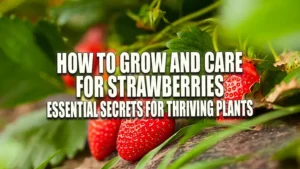






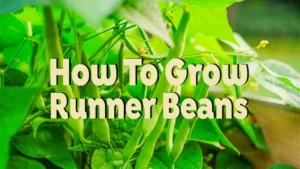
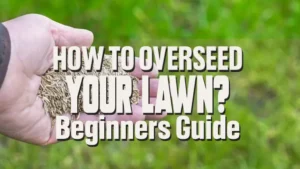


Leave your comment